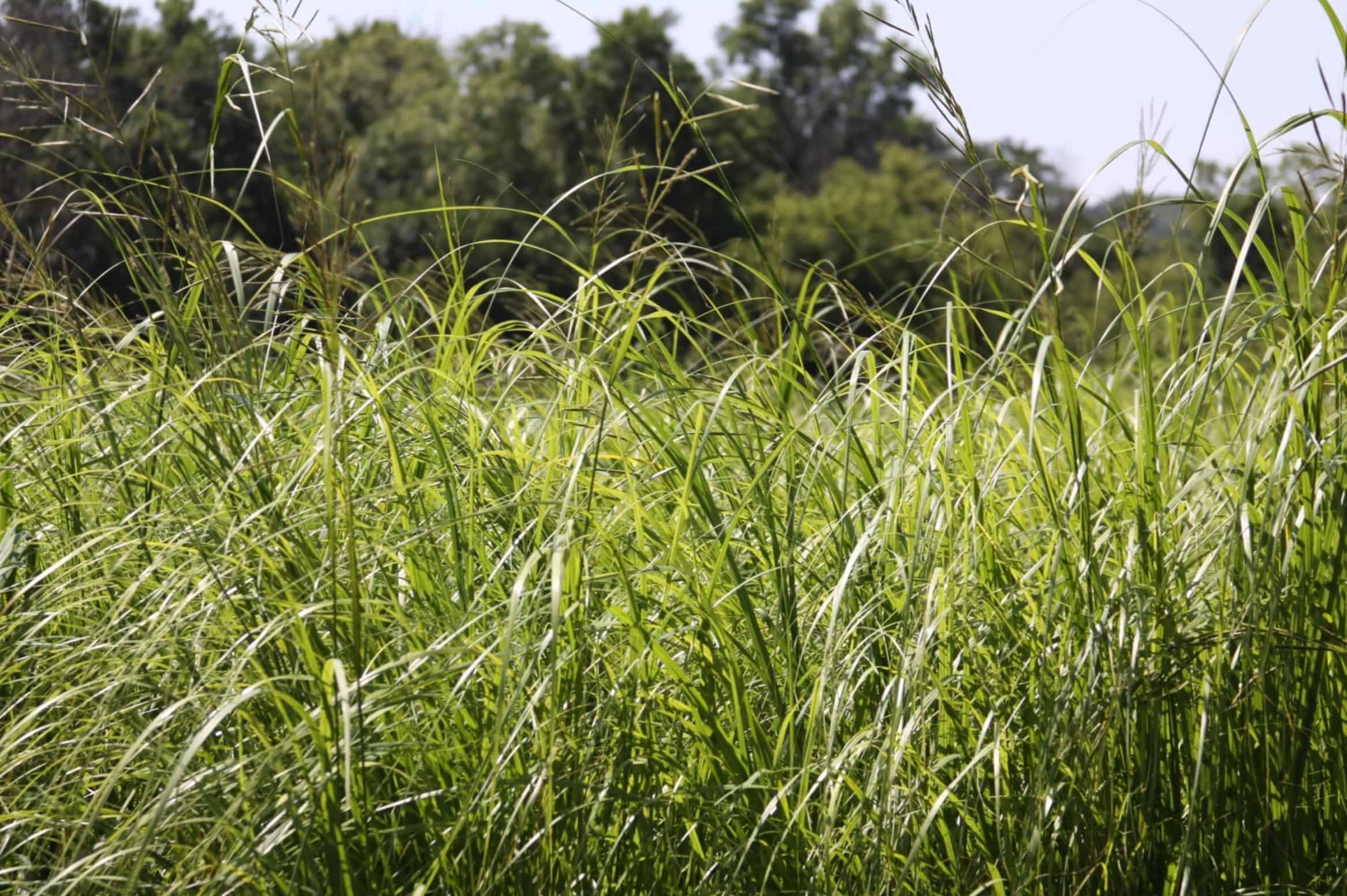
Cordgrass, also known as Spartina, is a remarkable plant that thrives in coastal marshes and estuaries. Its resilience and adaptability make it a crucial component of these unique ecosystems. From its ecological significance to its role in stabilizing shorelines, cordgrass has a fascinating array of traits that make it a subject of interest for researchers and nature enthusiasts alike. In this article, we'll delve into 20 intriguing facts about cordgrass, shedding light on its biology, ecological importance, and the ways it interacts with its environment. Whether you're a botany enthusiast, a student of ecology, or simply curious about the natural world, these facts will offer a deeper understanding of this resilient and vital plant. So, let's embark on a journey to explore the wonders of cordgrass and uncover the secrets that make it such a captivating and essential component of coastal ecosystems.
Key Takeaways:
- Cordgrass, also known as Spartina, is a resilient plant that thrives in coastal areas and wetlands, providing habitat and food for wildlife while helping to stabilize coastlines and purify water.
- The adaptability and ecological significance of cordgrass make it essential for preserving coastal ecosystems, inspiring scientific research, conservation efforts, and artistic expressions worldwide.
Cordgrass, also known as Spartina, is a genus of plants that belongs to the Poaceae family.
Cordgrass, commonly referred to as Spartina, is a group of plants within the Poaceae family. These plants are renowned for their resilience and adaptability to various habitats, making them a crucial component of many ecosystems.
There are around 20 species of cordgrass found worldwide.
Cordgrass is a diverse genus, encompassing approximately 20 species that thrive in different regions across the globe. Each species exhibits unique characteristics and plays a distinctive role within its respective ecosystem.
Cordgrass is commonly found in salt marshes, coastal areas, and wetlands.
The majority of cordgrass species are prevalent in salt marshes, coastal regions, and wetlands, where they contribute significantly to the stability and ecological balance of these environments.
These plants are known for their ability to tolerate high salinity in the soil.
One of the remarkable features of cordgrass is its capacity to thrive in high-saline conditions, a trait that sets it apart from many other plant species. This ability enables cordgrass to colonize and flourish in coastal areas and salt marshes.
Cordgrass plays a vital role in preventing coastal erosion.
The extensive root systems of cordgrass provide effective erosion control, helping to stabilize coastlines and protect against the damaging effects of waves and tidal forces.
It serves as a crucial habitat and food source for various wildlife species.
Cordgrass habitats support a rich diversity of wildlife, offering shelter, nesting sites, and sustenance for numerous animal species, including birds, fish, and invertebrates.
Cordgrass contributes to the purification of water in coastal areas.
Through its natural filtration and absorption capabilities, cordgrass plays a pivotal role in purifying water in coastal ecosystems, enhancing water quality and supporting marine life.
These plants are commonly used in ecological restoration projects.
Due to their ecological significance, cordgrass species are frequently employed in restoration initiatives aimed at rehabilitating degraded coastal and wetland environments.
Cordgrass has been utilized for soil stabilization and erosion control in landscaping and engineering projects.
In addition to its ecological benefits, cordgrass has been harnessed for soil stabilization and erosion control in various landscaping and engineering endeavors, proving to be an invaluable resource in mitigating environmental degradation.
The cultivation of cordgrass has faced challenges due to its invasive tendencies in certain regions.
While cordgrass plays a vital role in many ecosystems, some species have exhibited invasive characteristics in non-native habitats, posing challenges for local biodiversity and ecosystem dynamics.
Cordgrass has been a subject of scientific research for its ecological importance and potential applications.
The unique attributes and ecological significance of cordgrass have spurred extensive scientific inquiry, leading to a deeper understanding of its role in coastal ecosystems and the development of innovative applications in environmental management.
Cordgrass has historical and cultural significance in various coastal communities.
In addition to its ecological importance, cordgrass holds cultural and historical significance in many coastal communities, where it has been utilized for traditional crafts, livelihoods, and cultural practices.
The management and conservation of cordgrass habitats are essential for preserving coastal biodiversity.
Given the critical ecological functions of cordgrass ecosystems, effective management and conservation efforts are imperative for safeguarding coastal biodiversity and ecosystem resilience.
The adaptability of cordgrass to diverse environmental conditions underscores its ecological resilience.
The remarkable adaptability of cordgrass to a wide range of environmental conditions underscores its ecological resilience and capacity to thrive in the face of dynamic coastal ecosystems.
Cordgrass has inspired artistic and literary works, reflecting its profound connection to coastal landscapes and human experiences.
The captivating presence of cordgrass in coastal environments has served as a muse for various artistic and literary works, reflecting the deep-rooted connection between these plants, coastal landscapes, and human experiences.
The ecological services provided by cordgrass contribute to the overall health and sustainability of coastal ecosystems.
The multifaceted ecological services rendered by cordgrass, including erosion control, habitat provision, and water purification, are integral to the overall health and sustainability of coastal ecosystems.
Cordgrass species exhibit diverse morphological and physiological adaptations to different habitats.
The diverse morphological and physiological adaptations displayed by various cordgrass species reflect their remarkable capacity to thrive in diverse coastal and wetland habitats.
The conservation of cordgrass species is essential for maintaining the resilience of coastal ecosystems in the face of environmental challenges.
Given the escalating environmental pressures on coastal ecosystems, the conservation of cordgrass species is paramount for bolstering the resilience and adaptive capacity of these critical habitats.
Cordgrass continues to intrigue scientists, conservationists, and nature enthusiasts with its ecological significance and adaptive traits.
The enduring intrigue surrounding cordgrass stems from its profound ecological significance and remarkable adaptive traits, captivating the attention of scientists, conservationists, and nature enthusiasts worldwide.
Cordgrass epitomizes the resilience and beauty of coastal landscapes, embodying the intricate interplay between nature and human existence.
Cordgrass stands as a symbol of resilience and beauty within coastal landscapes, embodying the intricate interplay between nature and human existence, and underscoring the profound connections between coastal ecosystems and human well-being.
Cordgrass, also known as Spartina, is a genus of plants that belongs to the Poaceae family. These plants are renowned for their resilience and adaptability to various habitats, making them a crucial component of many ecosystems. Cordgrass is a diverse genus, encompassing approximately 20 species that thrive in different regions across the globe. The majority of cordgrass species are prevalent in salt marshes, coastal regions, and wetlands, where they contribute significantly to the stability and ecological balance of these environments. One of the remarkable features of cordgrass is its capacity to thrive in high-saline conditions, a trait that sets it apart from many other plant species. This ability enables cordgrass to colonize and flourish in coastal areas and salt marshes. The extensive root systems of cordgrass provide effective erosion control, helping to stabilize coastlines and protect against the damaging effects of waves and tidal forces. Cordgrass habitats support a rich diversity of wildlife, offering shelter, nesting sites, and sustenance for numerous animal species, including birds, fish, and invertebrates. Through its natural filtration and absorption capabilities, cordgrass plays a pivotal role in purifying water in coastal ecosystems, enhancing water quality and supporting marine life. Due to their ecological significance, cordgrass species are frequently employed in restoration initiatives aimed at rehabilitating degraded coastal and wetland environments. In addition to its ecological benefits, cordgrass has been harnessed for soil stabilization and erosion control in various landscaping and engineering endeavors, proving to be an invaluable resource in mitigating environmental degradation. While cordgrass plays a vital role in many ecosystems, some species have exhibited invasive characteristics in non-native habitats, posing challenges for local biodiversity and ecosystem dynamics. The unique attributes and ecological significance of cordgrass have spurred extensive scientific inquiry, leading to a deeper understanding of its role in coastal ecosystems and the development of innovative applications in environmental management. In addition to its ecological importance, cordgrass holds cultural and historical significance in many coastal communities, where it has been utilized for traditional crafts, livelihoods, and cultural practices. Given the critical ecological functions of cordgrass ecosystems, effective management and conservation efforts are imperative for safeguarding coastal biodiversity and ecosystem resilience. The remarkable adaptability of cordgrass to a wide range of environmental conditions underscores its ecological resilience and capacity to thrive in the face of dynamic coastal ecosystems. The captivating presence of cordgrass in coastal environments has served as a muse for various artistic and literary works, reflecting the deep-rooted connection between these plants, coastal landscapes, and human experiences. The multifaceted ecological services rendered by cordgrass, including erosion control, habitat provision, and water purification, are integral to the overall health and sustainability of coastal ecosystems. The diverse morphological and physiological adaptations displayed by various cordgrass species reflect their remarkable capacity to thrive in diverse coastal and wetland habitats. Given the escalating environmental pressures on coastal ecosystems, the conservation of cordgrass species is paramount for bolstering the resilience and adaptive capacity of these critical habitats. The enduring intrigue surrounding cordgrass stems from its profound ecological significance and remarkable adaptive traits, captivating the attention of scientists, conservationists, and nature enthusiasts worldwide. Cordgrass stands as a symbol of resilience and beauty within coastal landscapes, embodying the intricate interplay between nature and human existence, and underscoring the profound connections between coastal ecosystems and human well-being.
Conclusion
In conclusion, cordgrass is a fascinating plant with a multitude of ecological and practical uses. Its ability to thrive in challenging coastal environments makes it a valuable resource for stabilizing shorelines and providing habitat for diverse wildlife. As a biofuel and phytoremediation agent, cordgrass offers promising solutions for environmental sustainability. Its unique adaptations and resilience underscore the importance of preserving coastal ecosystems. By understanding and harnessing the potential of cordgrass, we can contribute to a more sustainable and balanced coexistence with the natural world.
FAQs
What are the ecological benefits of cordgrass?Cordgrass plays a crucial role in stabilizing coastlines, preventing erosion, and providing habitat for various species. Its dense root system helps to trap sediments and create a protective barrier against storm surges.
Is cordgrass suitable for landscaping in coastal areas?Yes, cordgrass is a popular choice for coastal landscaping due to its ability to thrive in saline environments and its aesthetic appeal. It can be used to create natural buffers and enhance the resilience of coastal properties.
Was this page helpful?
Our commitment to delivering trustworthy and engaging content is at the heart of what we do. Each fact on our site is contributed by real users like you, bringing a wealth of diverse insights and information. To ensure the highest standards of accuracy and reliability, our dedicated editors meticulously review each submission. This process guarantees that the facts we share are not only fascinating but also credible. Trust in our commitment to quality and authenticity as you explore and learn with us.


